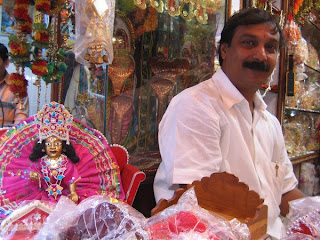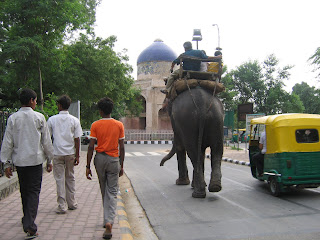Some pictures of how people work, where I live.
Rainy day boy, begging at the traffic light in Jaipur.

So young, and forced to dart amongst moving traffic to beg. No future to look forward to.
Heartbreaking.

Siesta time on a hot afternoon.
Rickshaw drivers park in the shade
at the circle between Humayun's Tomb
and the Dargah of Hazrat Nizamuddin.
These guys work so hard, late into the night.
Exhausted.
Shop in Kinari Bazaar, Old Delhi.
The smiling shopkeeper sells articles for household shrines, this idol is of Baby Krishna, wearing magenta, today.

Tiny dresses in every colour of the rainbow, and jewelry, provide sets of new garments for every festival. The doll-sized thrones, in wood, or velvet, are also available.
Freindly.
A sign-painter's tiny shop in Jaipur.
The graphic in Hindi says "Pentr".The box on legs is his shop/storage, the board serves as doorstep, and the paint can is his client's seat. Samples of the lion and actors are set out daily. Jeetu's shop is squeezed beside the on-ramp of a 6 lane national highway.

Maybe something could be done to perk up the Queensway in Ottawa? Something tells me it would be regarded as graffiti, rather than as a respectable career.
Resourceful.
 You will also be able to view my animation piece, " I Dreamt of India" there.
You will also be able to view my animation piece, " I Dreamt of India" there.
 Siesta time on a hot afternoon.
Siesta time on a hot afternoon.
































